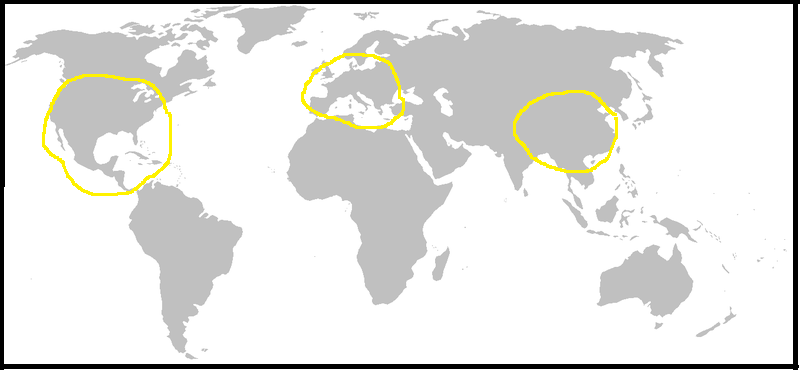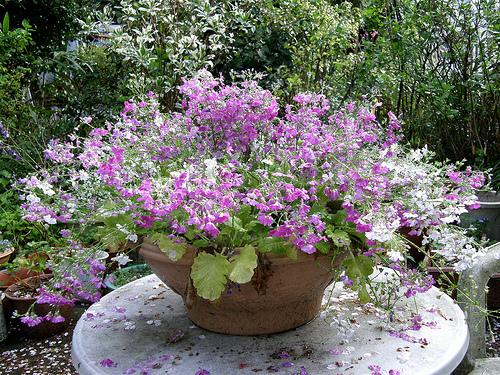Habitat:
Primula obconica originated from China and has been in Europe as a house plant for about a century (Frohne and Pfander, 2005). The Poisonous Primrose is labeled as an annual which means the plant's life cycle, germination to seed production to death, occurs within one year. Since it is an annual, it cannot survive in areas that can produce frost (Brickell, 2003). Another plant that is know as an annual is Anethum graveolens (Dill).
Bloomtime: early spring to early spring
Light: indirect moderate light. Moderate light
means the plant should be within 5 feet of an eastern or western
exposure window.
Temperature: a cool room (4.4°C-17.8°C)
pH: 5-6.5
Soil preference: Sandy loam to loam. Loam is
defined
as soil that has both sand and clay in it.
Watering: Primula obconica prefers moist
and well drained soil.
IN NATURE:
Other than being a potted plant, it can propagate in nature. The Poisonous Primrose can survive in a variety of soil types and is typically found in rock crevices, on talus, along stream banks, or in moist meadows. This plant is primarily in the northern hemisphere and can endure higher evaluations allowing for it to live on tops of mountains. With that being said, this plant has made adaptations to grow in warmer, desert like habitats (Burrows and Tyrl, 2001). Below is a map of where Poisonous Primrose is commonly known to grow or be found.

Since P. obconica's habitat can be found in the temperate grassland or temperate forest biomes, it can live along side a variety of other organisms such as humans, plants, insects, and mammals. Pinus strobus (Eastern White Pine Tree) is another organism that could be found in the temperate forest biome.
![]()
Why can Primula obconica can live in a variety
of areas?
Check out Changes I Have Made.
Back to the home page.

